Human Factors: How We Designed an Adaptive Culture for Our AI Company
When we began as a startup, we didn’t think like a big corporation; that’s the advantage of a small company. But we inherited lots of external pressure and expectation, so we fell into these traps of the corporate mindset which were not necessarily beneficial for us.

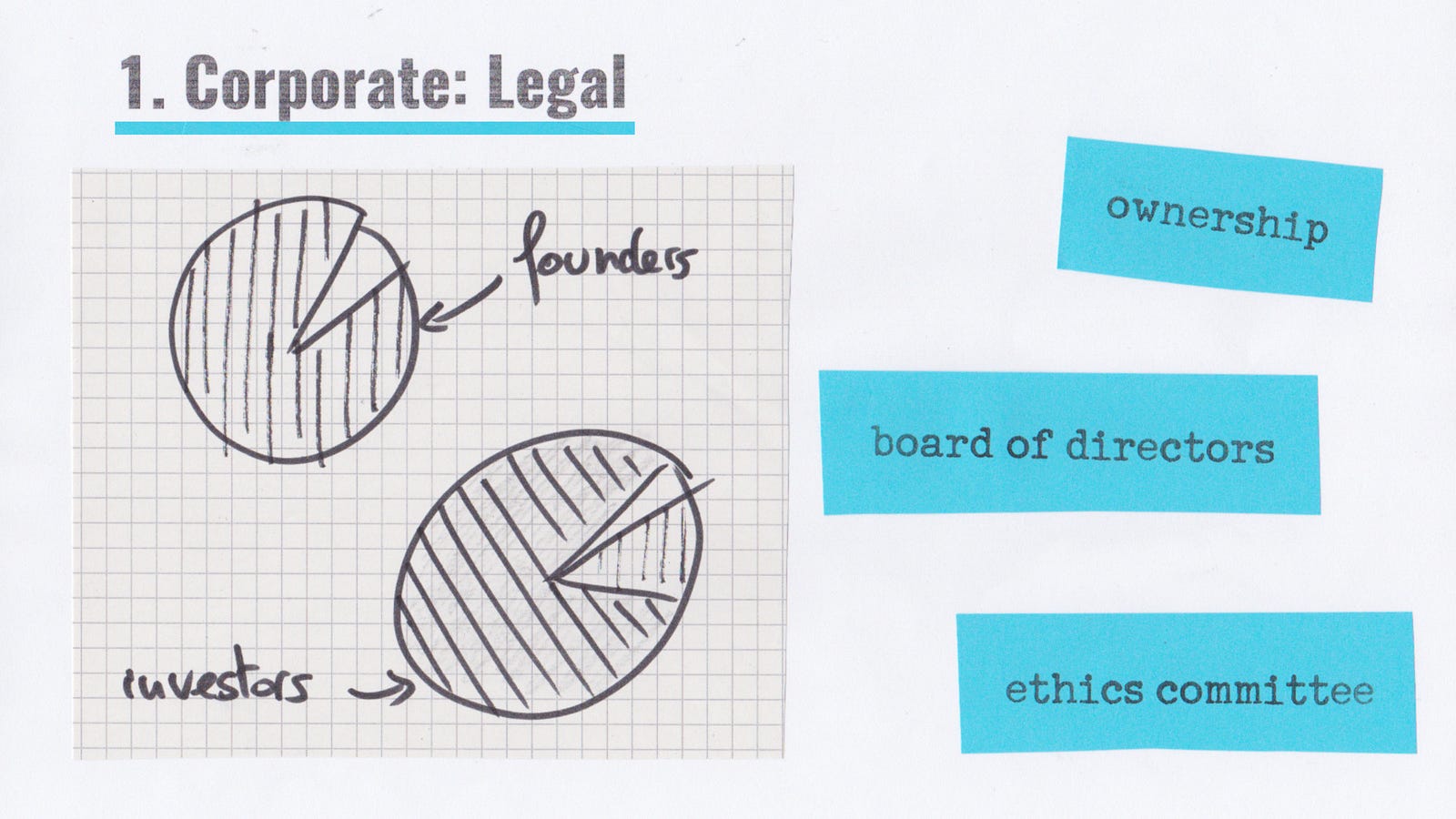
Looking at it from a legal perspective, ownership is control. As founders, we initially had all of the ownership with some allocated to the team. Then over time the investors buy incrementally buy over more and more of the company as the company grows and goes through multiple rounds of funding. As shareholders, whether founders or investors, we’re basically a small group of people that have control over the company.
We don’t think this structure, even when you have a board of directors, is intrinsically ethical. There are few people in control of what our A.I. technology can do and what the impact is on society. We’ve talked a lot about addressing this, for example with ethics committees, but since this ownership and control structure is not ethical in itself, we think it’s a bit like putting lipstick onto a pig. (We’ve been redesign this accordingly, as you’ll see below.)

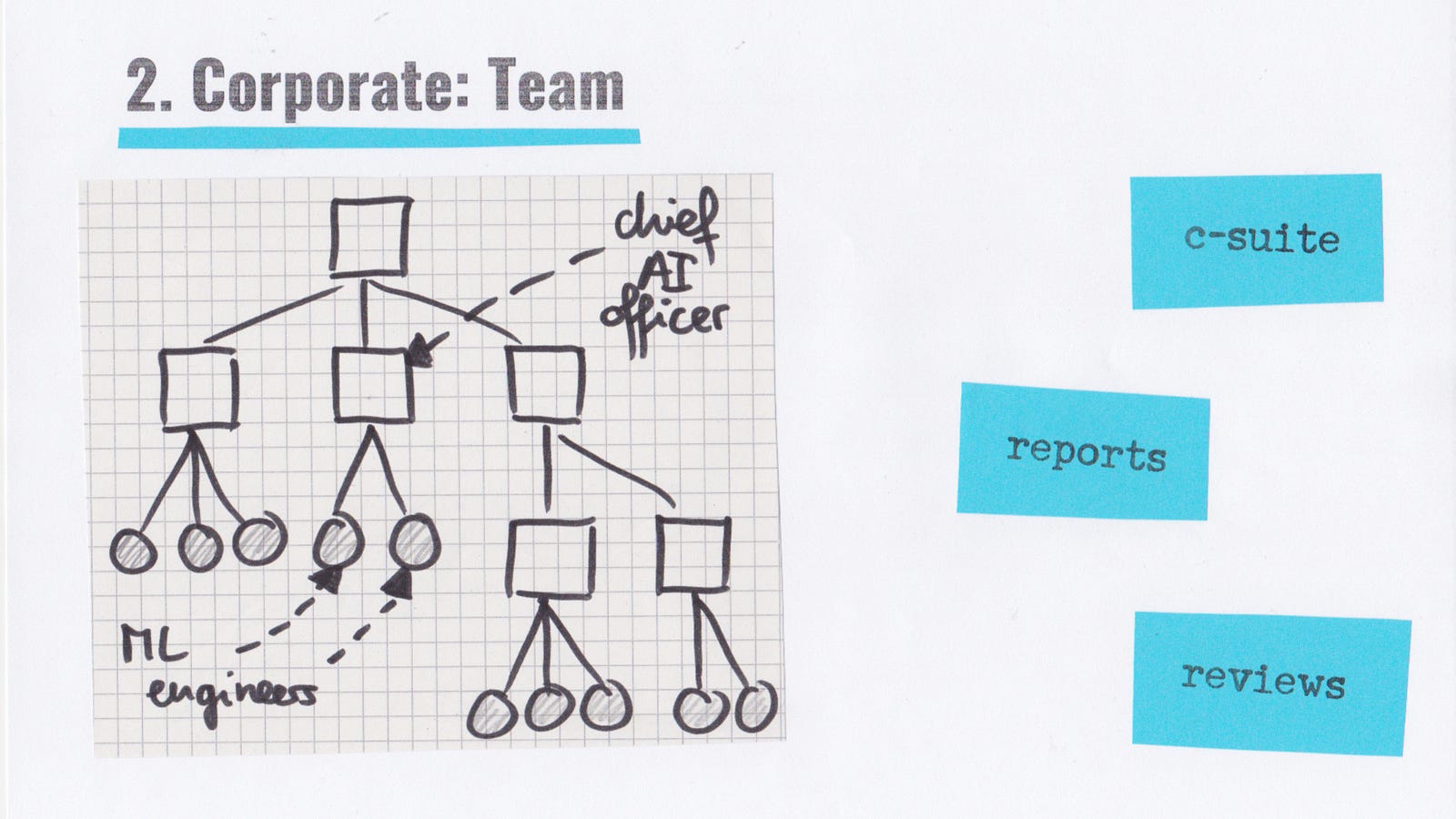
The ownership structure reflects itself in the team directly too, where it’s usually setup as a command and control structure. The investors love to hear what your roles are, who is Chief Creative Officer? Chief of Technology? Science Officer? We had these different labels that we gave ourselves, even though we were a small company, they were expected from us. In the future maybe we’ll have a Chief AI Officer with an army of Machine Learning engineers reporting to them ;-)
This setup creates a lot of tensions, both within the hierarchy top and down between “leadership” and the team itself, as well as between separate branches of the hierarchy—in particular if you separate the design and technology!


People tend to be frustrated and dissatisfied when working in these kinds of environments, no matter the company size. It’s coming from a place of power and control, which affects the people on the team and their mindsets. Everyone spends more time in internal company politics (we call this “Job 2”, the one you’re not hired for) not being able to affect things outside of their small area of influence in the hierarchy.
What does design do? Is it a separate branch from technology? Do designers just write documents as large specifications and throw them over the fence? This isn’t a very participatory culture; not only does this produce worse results, with fewer people bought in to the designs, but also causes a lot of sadness…


Looking at the statistics globally for the U.S., 18% of employees are actively sabotaging the projects they are on. 52%, that’s over half of employees, are retired on the job! Are these the kinds of emotions you want in people building or using the next generation of A.I. systems?
These are direct consequences of the power structure that goes on in almost all companies today, as a reflection of the ownership structure and the hierarchy that goes with it.

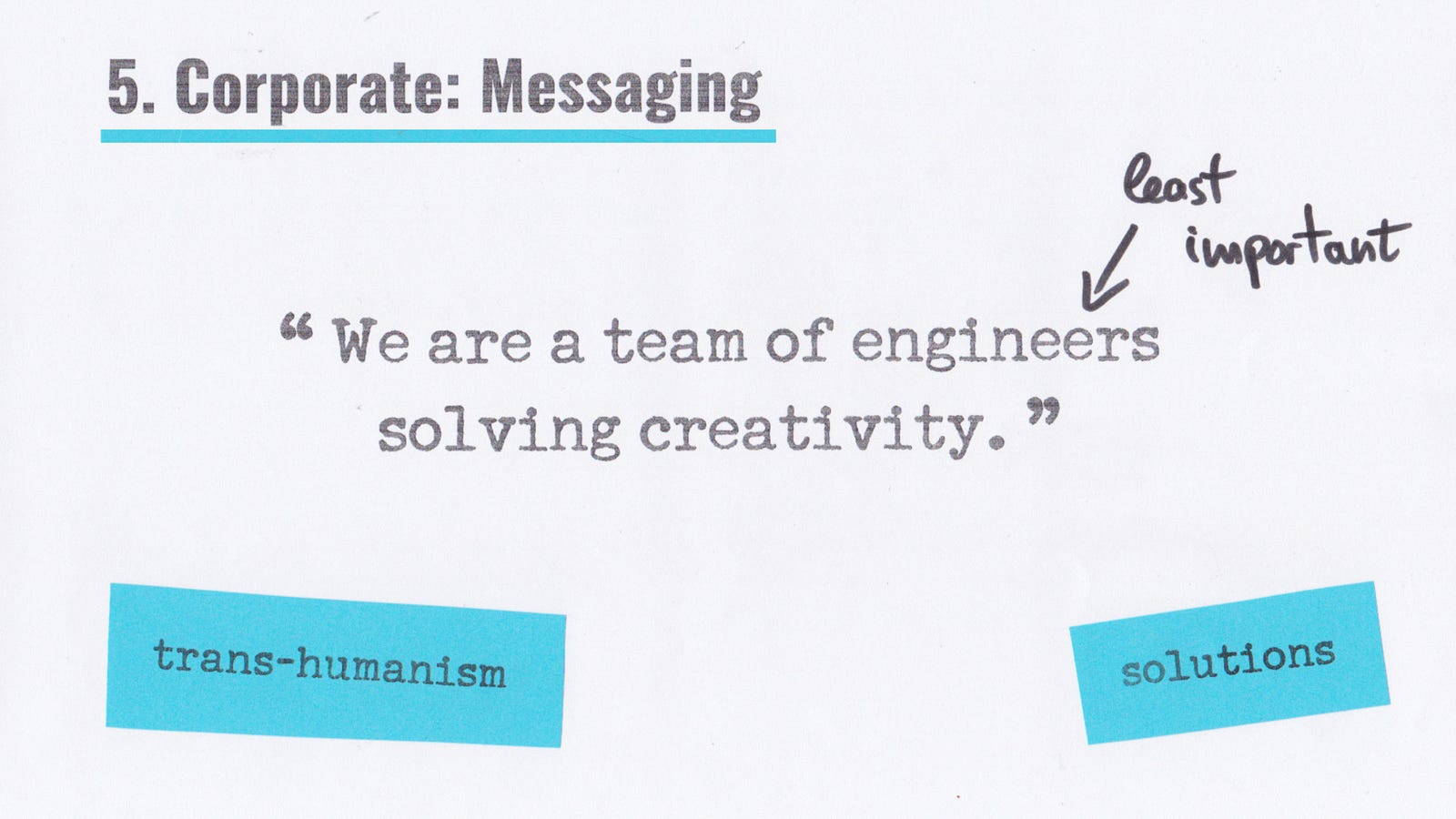
As creative.ai, we wanted to change all this but we inherited a lot of this baggage from the outside. People defined us as a team of engineers solving creativity. This very much a trans-humanist message where we’re coming in on a shining white horse trying to save humanity as a whole by solving creativity.
Actually, there’s nothing to be solved; creativity is a process and doesn’t need a solution to be found… and engineering the least important part of it.

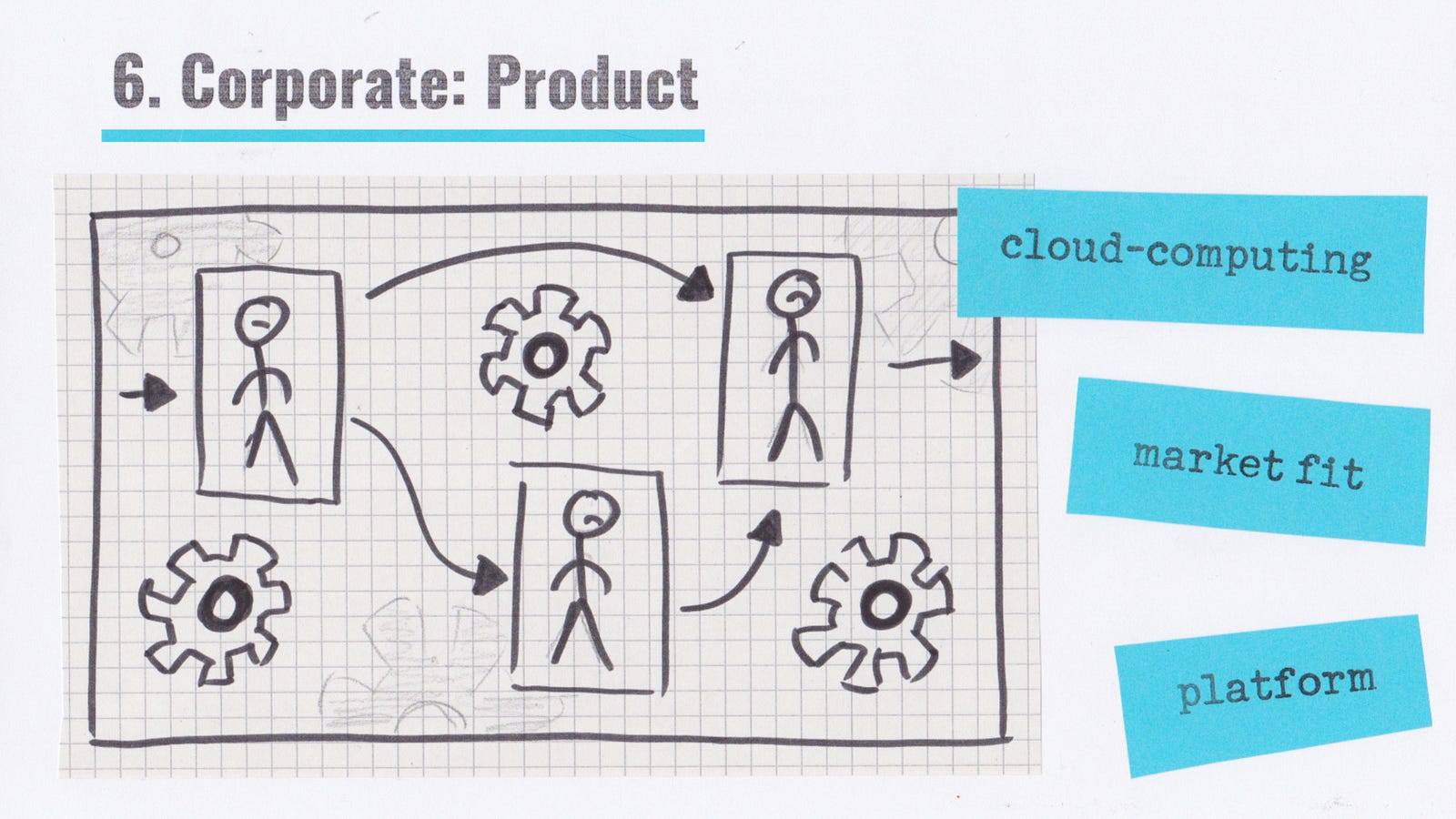
As a product, we talked about generative pipelines which resonated with some investors and big companies as well. The idea is that there’s an overall A.I. system that controls the generation of things end-to-end, then we put human-shaped holes inside this pipeline wherever there were problems we couldn’t “solve” with technology or where we needed more data.
This was a hybrid human/machine system, but it was not a humanist system. The people were basically cogs in a larger process that we were just using to gather data. It’s a form of centralization of power, just like the ownership and the hierarchy, but in this case it’s in the machine. Words like “cloud computing” and “platform” remind us about this power dynamic…

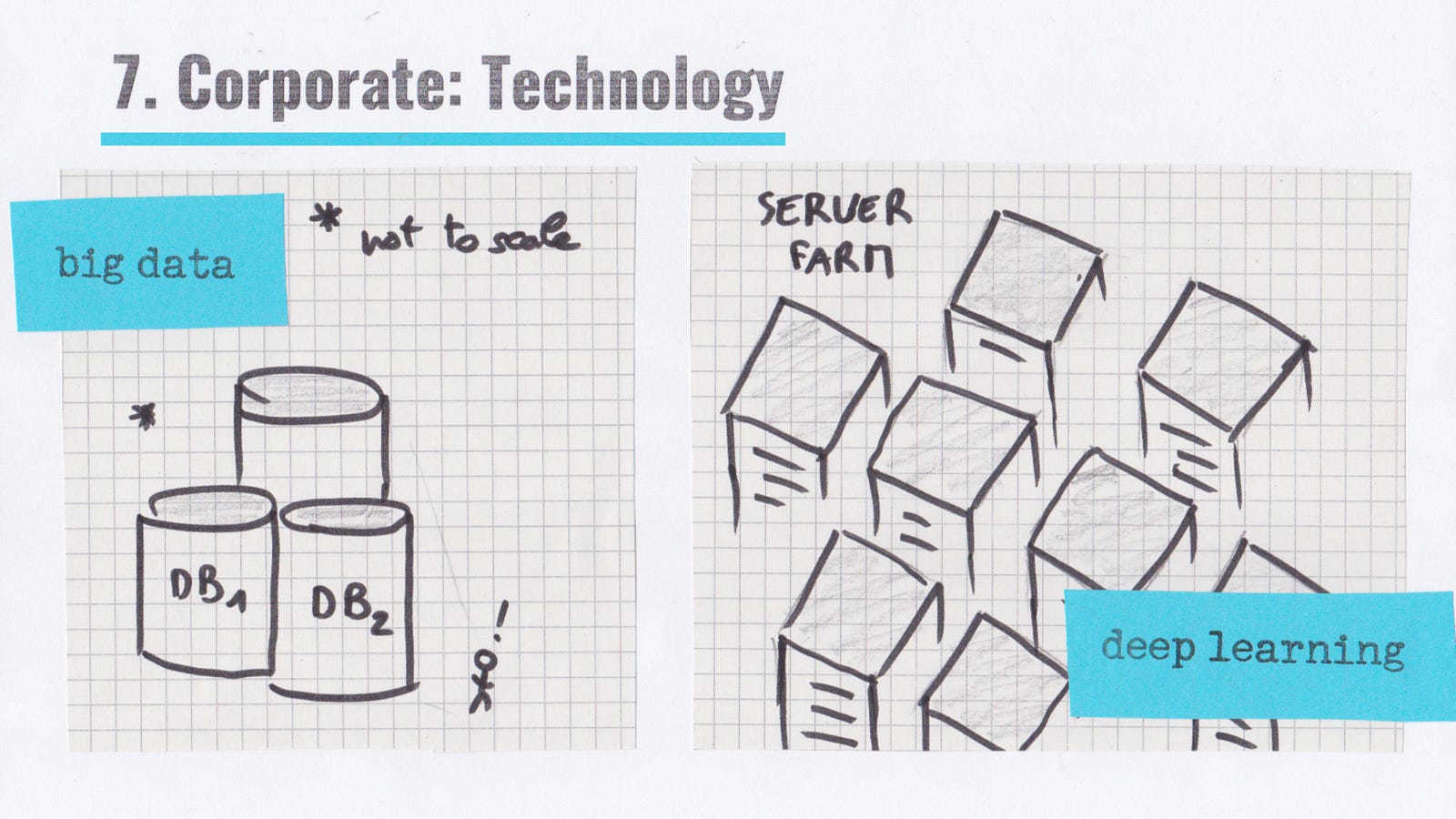
On the technology side, everyone talks about Big Data and Deep Learning. For the same reasons, they’re not the kinds of techniques we pursue primarily because every single individual’s is less important. You sacrifice every individual at the cost of the average; so if you’re not average, you’ll get sub-optimal performance.
But nobody is average. In the creative space, everyone wants to stand out! These techniques, as defined today, didn’t work for us. We couldn’t rely on them as our primary technology to empower individual creativity and agency. We have lots of data but we don’t think of it this way. Even the concept of a Server Farm is also a centralization of power, but you get the idea…
相關推薦
Human Factors: How We Designed an Adaptive Culture for Our AI Company
When we began as a startup, we didn’t think like a big corporation; that’s the advantage of a small company. But we inherited lots of external pressure and
How we built an app that manages reviews for popular consumer brands
How we built an app that manages reviews for popular consumer brandsHello, I am Adrian, one of the founders at FeedCheck, an app that manages reviews for p
How to Create an ARIMA Model for Time Series Forecasting in Python
Tweet Share Share Google Plus A popular and widely used statistical method for time series forec
How do we implement an e-commerce tracking plan? Documentation
When tracking your data, it’s important to set yourself up for success. E-commerce and retail companies want to use their data to understand why some custo
Think in ISP(image sensor pipe )之How to implement an effecitive AE
方法 建立 avi pan .net article dir help blog How to implement a effecitive AE. AE(自己主動曝光) 1)try Minual exposure //time,
Human Factors Checklist
背景 可能 健康 特殊 工作表 技術 連續 tor 基本 生物力學的、生理學的和人體測量學的背景 生物力學的背景 1、關節是在中性位置嗎? 2、是靠近身體工作的嗎? 3、避免向前彎曲的姿勢了嗎? 4、避免扭轉軀幹的姿勢了嗎? 5、避免突然的移動和用力了嗎? 6、姿勢和動作有
論文筆記——An online EEG-based brain-computer interface for controlling hand grasp using an adaptive probabilistic neural network(10年被引用66次)
不同 -s evel 模型 his ren 虛擬 dem virt 題目:利用自適應概率網絡設計一種在線腦機接口樓方法控制手部抓握 概要:這篇文章提出了一種新的腦機接口方法,控制手部,系列手部抓握動作和張開在虛擬現實環境中。這篇文章希望在現實生活中利用腦機接口技術控制抓握。
An Adaptive Color-Based Particle Filter--粒子濾波
粒子濾波跟蹤的具體步驟如下; 1. Resampling the particles to avoid degeneracy 2. Propagate each particles according to our dynamical model 3
How to Use an Ethernet Switch?
For many household use, it is common to see just a modem and a router. That’s enough for most family network requirements. However, if you have too ma
How we redesigned the NSQ
之前的 文章 講述了我們重塑NSQ的目的和目標, 接下來我們將詳細描述下每個功能的具體技術細節. 重構後架構圖 首先, 看一下重構後的整體架構圖: 原來的幾個NSQ元件大部分功能是複用的, 圖中新增的就是元資料儲存服務-etcd, 以及資料同步和HA處理邏輯.
How To Train an Object Detection Classifier for Multiple Objects Using TensorFlow (GPU) on Windows10
本文主要是記錄和簡義這個github專案的練習 裝置windows10 tensorflow1.10.0 原文github:點這裡 偶然發現的和我類似的文章還沒看 點這裡 首先我們知道,tensorflow官方是有一個物體檢測的API介面的。而我們今天要練習的專案就
How We Select Students
How We Select StudentsHello, I’m Karen Zachary, the Director of Admissions for Lambda School, and I’m answering questions about how we select students. I’v
How to send an object from one Android Activity to another using Intents?
在 Activity 之間傳遞引數的方法: If you’re just passing objects around then Parcelable was designed for this. It requires a little more effort to use than using J
how to publish an application using google app engine
Today, I did both a video recap and got my simple blog published. I am going to create a new video demonstrating how to publish your own blog after you
How to convert an HttpServletRequest to String?
這個,滿多人去實作的,我最後是用這一個解法: // Convert the request inputStream to string String str_request = IOUtils.toString(request.getInputStream()); // Count the actual
[iOS] How to sort an NSMutableArray with custom objects in it?
範例1: I think this will do it: brandDescriptor = [[NSSortDescriptor alloc] initWithKey:@"brand" ascending:YES]; sortDescriptors = [NSArray arrayWithObject
How to close an ActionMode menu programmatically?
這個 ActionMode 用起來滿神奇的,他幾乎算是一個特定區塊的dialog,但是和 dialog 不同的是會和上一個 activity overlap 在一起,並可以存取 parent fragment 或 activity 裡的變數內容,更像是 toolbar 的概念。 要開始/結束 ActionM
How to Write an Action Listener
https://docs.oracle.com/javase/tutorial/uiswing/events/actionlistener.html Action listeners are probably the easiest — and most common — event h
How to build an Ethereum Wallet web app
To send Ether, we need to use native functions provided by the web3.js library, while sending tokens and checking balances involves interaction with a smar
How to send an SMS in Node.js via SMPP Gateway
How to send an SMS in Node.js via SMPP GatewayIntroductionSMPP (Short Message Peer-to-Peer) is a protocol used by the telecommunications industry. It excha
